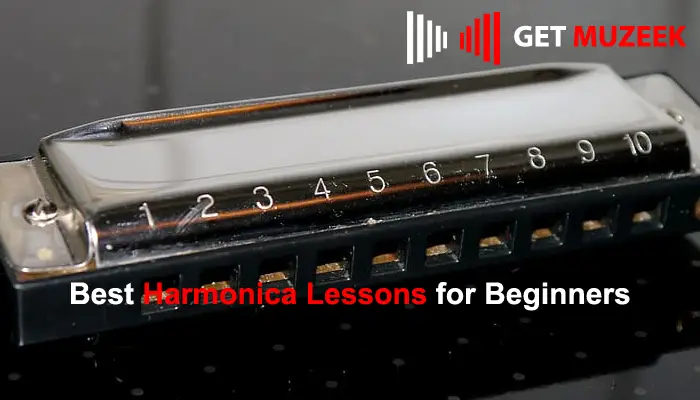
As you embark on your Four Parts Harmony musical journey into the realms of music theory and composition, the concept of four-part harmony will inevitably emerge as a fundamental pillar of understanding.
Found extensively in the timeless compositions of classical masters such as Bach, Mozart, and Beethoven, four-part harmony holds a profound significance in the tapestry of musical expression.
In this guide, we will delve deep into the intricacies of this concept, unraveling its complexities and unveiling its creative potential.
Understanding Four-Part Harmony: An Overview
In the vast landscape of music, four distinct voices – Soprano, Alto, Tenor, and Bass (SATB) – form the cornerstone of four-part harmony. These voices, whether resonating from vocal cords or emanating from instruments, weave together to create harmonious melodies and rich chord progressions.
Despite its traditional roots, four-part harmony remains a prevalent and indispensable framework in contemporary music theory.
This concept encompasses two primary dimensions:
- The number of voices involved, typically four, each contributing its unique sonic character.
- The interplay between these voices, manifesting as either melodic (horizontal) or harmonic (vertical) expressions.
E.g. when examining a classical masterpiece by Bach or Mozart through the lens of four-part harmony, we discern a dual narrative: each voice carries its melodic line, intertwining horizontally, while simultaneously converging to form harmonious chords, vertically.
Historical Significance and Relevance Today
The historical trajectory of four-part harmony spans centuries of musical evolution, from its emergence in the baroque era to its enduring prominence in contemporary compositions.
Amidst the myriad of musical possibilities, four-part harmony has stood the test of time, embodying the essence of tonal music and serving as a quintessential framework for harmonic exploration.
Two pivotal factors underscore the enduring relevance of four-part harmony:
- As tonal music – characterized by major and minor keys – flourished, so did the symbiotic relationship with four-part harmony. This harmonic symbiosis, rooted in centuries-old tradition, continues to resonate with musicians across genres and generations.
- Moreover, the inclusive nature of four-part harmony, accommodating both low and high voices, facilitates a harmonious blend of male and female ranges. This versatility extends its applicability to orchestral ensembles, instrumental arrangements, and choral compositions alike.
Why Learn an Ancient Concept?
Before immersing ourselves in the intricacies of writing four-part harmony, it’s pertinent to address a pressing question: Why invest time and effort into mastering an ancient concept?
The study of four-part harmony serves as a gateway to unlocking the inner workings of music, offering invaluable insights into chord progressions, rhythmic structures, and melodic interplay. Beyond its practical applications, delving into the historical evolution of four-part harmony fosters a deeper appreciation for the rich tapestry of musical heritage. Moreover, by analyzing how composers wielded these harmonic tools, we gain a newfound appreciation for the timeless allure of classical compositions.
What You Should Learn The 4 Parts Harmony
Let’s go back in history! The 17th, 18th and 19th century was when the four parts harmony became a conventionally used notion in music theory. While Chord progression for 2,3,5,6 and even seven voices exist, four parts harmony is the most popular one practised even today!
There are two reasons for this.
- When the concept of tonal music (major and minor keys) became popular, so did the idea of four parts harmony. The two go well with each other and complement one another as both involve four parts or voices.
- Secondly, Four-part harmony also involves the concept of low and high voice with the low being male and high being female and even a middle ground between the 2.
Justified by the reasons given above, even orchestral and instrumental music was written using four-part harmony.
Before jumping into the details of writing the four parts harmony, let us clear a query that must be stirring in your mind.
Basics Of Writing Four Parts Harmony
To embark on the journey of mastering four-part harmony, aspiring musicians must acquaint themselves with three foundational components:
Notation
The intricate art of notation renders four-part harmony tangible, with each voice meticulously transcribed onto the staff.
Whether it’s the ethereal soprano soaring in treble clef or the resonant bass anchoring the lower register in bass clef, ensuring clarity in notation is paramount for effective communication of musical ideas.
Voice Ranges
Each voice within the SATB ensemble possesses a distinct vocal range, spanning from the celestial heights of the soprano to the earthy depths of the bass. Understanding these vocal ranges not only facilitates effective composition but also ensures the optimal distribution of voices within harmonic frameworks.
- Soprano: middle C up to high G
- Alto: from G below middle C up to C above middle C
- Tenor: from C below middle C up to G above middle C
- Bass: from F below stave up to middle C
Doubling Rules
At the heart of four-part harmony lies the intricate interplay of voices, where basic chords are enriched through doubling.
By strategically assigning one note to multiple voices, composers infuse depth and richness into harmonic textures, creating a symphonic tapestry that captivates the listener’s ear.
Conclusion – Four Parts Harmony
In conclusion, mastering four-part harmony is a transformative journey that transcends mere technical proficiency, delving into the realm of artistic expression and creative exploration. While the path may appear daunting at first glance, this comprehensive guide serves as a beacon of light, illuminating the intricacies of four-part harmony and empowering aspiring musicians to embark on their own harmonic odyssey.
As you navigate the labyrinth of musical possibilities, remember that the pursuit of mastery is not merely an end in itself but rather a journey of self-discovery and artistic growth.
With dedication, perseverance, and a dash of creative flair, you’ll find yourself orchestrating harmonies that resonate with the soul and echo through the annals of musical history.
Explore More!
- 9 Ways To Get Better At Music Composition
- 10 Best Fun Songs to Play on Guitar in 2022 – Best Songs of All Time
- 15 Best Easy Songs to Sing in 2022
- 15 Best Easy Country Songs to Play on Guitar
- 10 Best Headless Guitars in 2022

